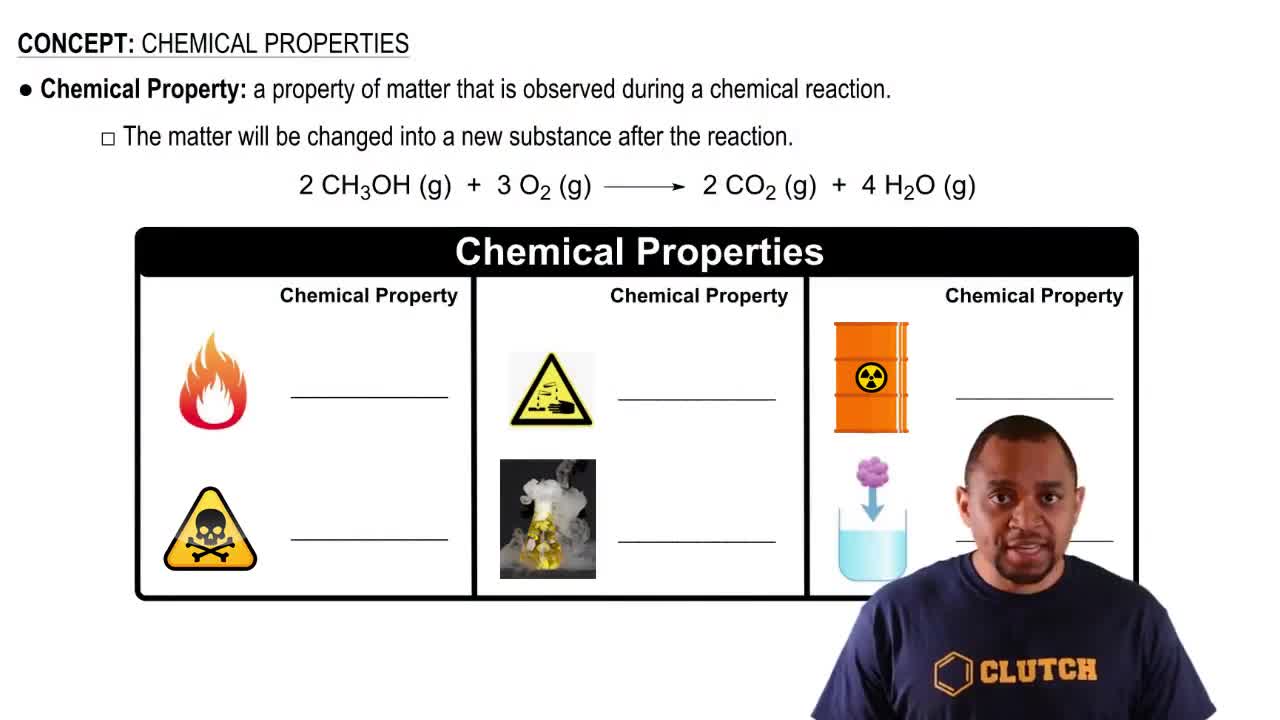Determine whether each molecular diagram represents a pure substance or a mixture. If it represents a pure substance, classify the substance as an element or a compound. If it represents a mixture, classify the mixture as homogeneous or heterogeneous.
Classify each property as physical or chemical. a. the tendency of ethyl alcohol to burn b. the shine on silver c. the odor of paint thinner d. the flammability of propane gas
 Verified step by step guidance
Verified step by step guidance
Verified Solution
Key Concepts
Physical Properties

Chemical Properties

Flammability

Classify each of the listed properties of isopropyl alcohol (also known as rubbing alcohol) as physical or chemical. a. colorless b. flammable c. liquid at room temperature d. density = 0.79 g/mL e. mixes with water
Classify each of the listed properties of ozone (a pollutant in the lower atmosphere but part of a protective shield against UV light in the upper atmosphere) as physical or chemical. a. bluish color b. pungent odor c. very reactive d. decomposes on exposure to ultraviolet light e. gas at room temperature
Classify each property as physical or chemical. a. the boiling point of ethyl alcohol b. the temperature at which dry ice evaporates c. the tendency of iron to rust d. the color of gold
Classify each change as physical or chemical. a. Natural gas burns in a stove. b. The liquid propane in a gas grill evaporates because the valve was left open. c. The liquid propane in a gas grill burns in a flame. d. A bicycle frame rusts on repeated exposure to air and water.
Based on the molecular diagram, classify each change as physical or chemical.
